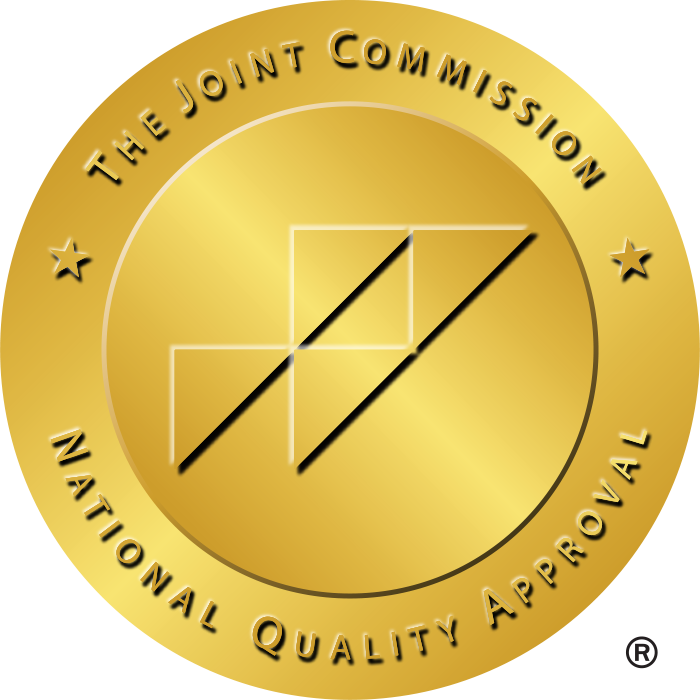Earlier in the days, we heard about dieting from fitness enthusiasts, athletes, and people trying to manage weight. However, dieting and clean eating have now gone beyond just buzzwords on social media. Most people are obsessed with different kinds of diets, Keto, paleo, carnivore, low-carb, high-protein, and the list goes on. Hence, dietician jobs have taken the center stage in the medical industry. Dietitians have come a long way, with much greater influence and scope.
Now, dietician jobs are not limited to specialty private clinics but have vastly expanded to hospitals, specialty clinics, physician offices, and many other medical settings. But the question is, is it worth it being a diet expert? To answer that, you need to understand how the roles of dietician jobs have evolved over time. Hence, you should compare it with other hospitalist jobs with industry insights to weigh the job role and its full scope. Only then you’ll be able to make the right decision.

How Dietician Jobs Have Evolved Over Time
Traditionally, the role of dietician jobs were confined to clinical settings, often working alongside sports coaches, gym instructors, and doctors. In private settings, the collaborations were to keep athletes and fitness enthusiasts in pristine health. However, in hospitals, they worked to improve patient care and monitor patients with dietary restrictions due to medical conditions. In hospitals, dietician jobs were mostly associated with patients having chronic conditions that require special diets, such as diabetes, obesity, heart conditions, digestive issues, and more.
However, this narrative evolved over time as more people became aware of the nutritional benefits of different types of diets. The narrative about dieting relating to weight loss has now changed to using diet as a means of preventive care. One great example of this comes from Mikhaila Peterson, who swears by the effects of a carnivore diet and how it helped her autoimmune disease.
Similarly, there are many examples coming from different people about different diets and how they helped them prevent many medical conditions. This is why dietician jobs have become quite in demand. Now, dietician jobs have expanded to offering wellness programs and collaboration directly with food companies to create healthy menus. Many dietitians also take the unconventional route with television shows and podcasts to help people with different diets.
With the boom of social media and the progress of digital media, dietician jobs have left the confinement of a single-room office to the vastness of the internet. Now, there are no geographic limits with virtual consultations, enabling dietitians to help people across the globe.
Comparison of Dietician Jobs with Other Healthcare Professions
To get the full gist of whether dietician jobs are worth it or not as a medical professional, it’s only wise to compare it with other hospitalist jobs. For instance, nursing jobs and other allied healthcare professions are quite rewarding career options, offering great financial benefits. However, many of these career paths lead to lower work-life balance, emotional distress, fatigue, and much more. On the contrary, dietician jobs are way more flexible with better work-life balance.
Moreover, dietician jobs do not require much technical proficiency, unlike some hospitalist jobs such as radiologist jobs, surgical technologist jobs, ultrasound tech jobs, etc. Other medical professionals, especially those in allied careers, have minimal to no patient interaction. However, dietician jobs offer a human-centered approach, which can be more fulfilling for those interested in direct interaction.
Salary Expectations & Job Outlook for Dietician Jobs
Now, you must be thinking about salary expectations and job prospects. According to the U.S. Bureau of Labor Statistics (BLS), the employment growth of dietitians and nutritionists is expected to grow by 7% in the upcoming decade, with 6,100 new job openings every year. Due to this, the job prospect of dietician jobs is very promising with plenty of opportunities. These jobs are available in many healthcare settings, such as hospitals, nursing homes, clinics, cafeterias, and for state and local governments.
If you are looking for dietician jobs near me, it’s better to connect with a healthcare staffing agency. The best healthcare staffing agencies have comprehensive lists of job placements for dieticians and nutritionists. They can help you find the best dietician jobs nearby that aligns well with your goals.
The average dietitian in the US earns around $76,000 per year. However, the top earners can earn up to $111,000 annually. If salary is the primary motivator for your career choice, you may be disappointed comparing with other healthcare jobs. However, dietician jobs have more earning potential with virtual consultations, private collaborations, and other unconventional routes, such as social media or podcasts. Unlike other hospital jobs, dietitians can take multiple assignments at a time by scheduling virtual and in-person consultancies properly.
Career Growth Opportunities for Dietitians
Similar to other medical professions, dietitians can also go for specializations to further improve their career path. There are plenty of growth opportunities as we become more and more aware of the dietary demands of our body. Some potential specializations with immense growth are:
- Sports nutritionists — working with sports coaches and gym instructors to support athletes’ health.
- Pediatric dietitian — specializes in diet plans focused on the nutritional needs of kids and teens
- Renal dietitian — helping patients with kidney issues with nutrition intake balanced with dietary restrictions.
- Public health nutritionist — offering wellness programs and initiatives to the general public for community-wide influence.
- Corporate wellness consultant — collaborating with companies to plan nutritional diets for employees, improving their well-being.
Other than these specializations, there are remote dietitian jobs as well, enabling dietitians to influence health outcomes, guide lifestyles, and help people with preventive diets beyond geographical barriers.
Potential Challenges of Dietician Jobs
Dietician jobs are not just about green juices, smoothies, and quinoa bowls. The challenges are real.
- On one hand, where telehealth has offered many opportunities for dietician jobs, it also came with a downside. The so-called “nutrition coaches” are all over social media, misguiding people with outrageous diets. Unfortunately, some of these even result in very dangerous outcomes. Hence, dietician jobs entails educating clients who have misinformation from fake social media influencers.
- When it comes to starting your journey as a dietician, salaries for entry-level dietician jobs can be underwhelming compared to other hospitalist jobs. At first, it can seem like not a good direction if salary is the primary motivator for your job.
- More often than not, dietician jobs do not get the same recognition as doctors and nurses in medical facilities. This may be due to the stigma around dietician jobs as not being part of the healthcare profession. However, with progress, rising awareness, and emphasis on preventive care, this notion is changing.
Final Thoughts!
Dietician jobs are a great career path for individuals passionate about nutrition and influencing the lifestyles of people toward health and preventive care. It’s a great path to enter the medical workforce and help people lead good lives. The job prospect is excellent, with a much faster growth than most occupations. Hence, choosing dietician jobs as your future career is totally worth it.
Dietician jobs offer a unique blend of flexibility, purpose, and impact. This is why dietician jobs can be very fulfilling, with greater job satisfaction and plenty of opportunities to maximize your income.
Dietician jobs: Is It Worth Being a Diet Expert?
Earlier in the days, we heard about dieting from fitness enthusiasts, athletes, and people trying to manage weight. However, dieting and clean eating have now gone beyond just buzzwords on social media. Most people are obsessed with different kinds of diets, Keto, paleo, carnivore, low-carb, high-protein, and the list goes on. Hence, dietician jobs have taken the center stage in the medical industry. Dietitians have come a long way, with much greater influence and scope.
Now, dietician jobs are not limited to specialty private clinics but have vastly expanded to hospitals, specialty clinics, physician offices, and many other medical settings. But the question is, is it worth it being a diet expert? To answer that, you need to understand how the roles of dietician jobs have evolved over time. Hence, you should compare it with other hospitalist jobs with industry insights to weigh the job role and its full scope. Only then you’ll be able to make the right decision.

How Dietician Jobs Have Evolved Over Time
Traditionally, the role of dietician jobs were confined to clinical settings, often working alongside sports coaches, gym instructors, and doctors. In private settings, the collaborations were to keep athletes and fitness enthusiasts in pristine health. However, in hospitals, they worked to improve patient care and monitor patients with dietary restrictions due to medical conditions. In hospitals, dietician jobs were mostly associated with patients having chronic conditions that require special diets, such as diabetes, obesity, heart conditions, digestive issues, and more.
However, this narrative evolved over time as more people became aware of the nutritional benefits of different types of diets. The narrative about dieting relating to weight loss has now changed to using diet as a means of preventive care. One great example of this comes from Mikhaila Peterson, who swears by the effects of a carnivore diet and how it helped her autoimmune disease.
Similarly, there are many examples coming from different people about different diets and how they helped them prevent many medical conditions. This is why dietician jobs have become quite in demand. Now, dietician jobs have expanded to offering wellness programs and collaboration directly with food companies to create healthy menus. Many dietitians also take the unconventional route with television shows and podcasts to help people with different diets.
With the boom of social media and the progress of digital media, dietician jobs have left the confinement of a single-room office to the vastness of the internet. Now, there are no geographic limits with virtual consultations, enabling dietitians to help people across the globe.
Comparison of Dietician Jobs with Other Healthcare Professions
To get the full gist of whether dietician jobs are worth it or not as a medical professional, it’s only wise to compare it with other hospitalist jobs. For instance, nursing jobs and other allied healthcare professions are quite rewarding career options, offering great financial benefits. However, many of these career paths lead to lower work-life balance, emotional distress, fatigue, and much more. On the contrary, dietician jobs are way more flexible with better work-life balance.
Moreover, dietician jobs do not require much technical proficiency, unlike some hospitalist jobs such as radiologist jobs, surgical technologist jobs, ultrasound tech jobs, etc. Other medical professionals, especially those in allied careers, have minimal to no patient interaction. However, dietician jobs offer a human-centered approach, which can be more fulfilling for those interested in direct interaction.
Salary Expectations & Job Outlook for Dietician Jobs
Now, you must be thinking about salary expectations and job prospects. According to the U.S. Bureau of Labor Statistics (BLS), the employment growth of dietitians and nutritionists is expected to grow by 7% in the upcoming decade, with 6,100 new job openings every year. Due to this, the job prospect of dietician jobs is very promising with plenty of opportunities. These jobs are available in many healthcare settings, such as hospitals, nursing homes, clinics, cafeterias, and for state and local governments.
If you are looking for dietician jobs near me, it’s better to connect with a healthcare staffing agency. The best healthcare staffing agencies have comprehensive lists of job placements for dieticians and nutritionists. They can help you find the best dietician jobs nearby that aligns well with your goals.
The average dietitian in the US earns around $76,000 per year. However, the top earners can earn up to $111,000 annually. If salary is the primary motivator for your career choice, you may be disappointed comparing with other healthcare jobs. However, dietician jobs have more earning potential with virtual consultations, private collaborations, and other unconventional routes, such as social media or podcasts. Unlike other hospital jobs, dietitians can take multiple assignments at a time by scheduling virtual and in-person consultancies properly.
Career Growth Opportunities for Dietitians
Similar to other medical professions, dietitians can also go for specializations to further improve their career path. There are plenty of growth opportunities as we become more and more aware of the dietary demands of our body. Some potential specializations with immense growth are:
- Sports nutritionists — working with sports coaches and gym instructors to support athletes’ health.
- Pediatric dietitian — specializes in diet plans focused on the nutritional needs of kids and teens
- Renal dietitian — helping patients with kidney issues with nutrition intake balanced with dietary restrictions.
- Public health nutritionist — offering wellness programs and initiatives to the general public for community-wide influence.
- Corporate wellness consultant — collaborating with companies to plan nutritional diets for employees, improving their well-being.
Other than these specializations, there are remote dietitian jobs as well, enabling dietitians to influence health outcomes, guide lifestyles, and help people with preventive diets beyond geographical barriers.
Potential Challenges of Dietician Jobs
Dietician jobs are not just about green juices, smoothies, and quinoa bowls. The challenges are real.
- On one hand, where telehealth has offered many opportunities for dietician jobs, it also came with a downside. The so-called “nutrition coaches” are all over social media, misguiding people with outrageous diets. Unfortunately, some of these even result in very dangerous outcomes. Hence, dietician jobs entails educating clients who have misinformation from fake social media influencers.
- When it comes to starting your journey as a dietician, salaries for entry-level dietician jobs can be underwhelming compared to other hospitalist jobs. At first, it can seem like not a good direction if salary is the primary motivator for your job.
- More often than not, dietician jobs do not get the same recognition as doctors and nurses in medical facilities. This may be due to the stigma around dietician jobs as not being part of the healthcare profession. However, with progress, rising awareness, and emphasis on preventive care, this notion is changing.
Final Thoughts!
Dietician jobs are a great career path for individuals passionate about nutrition and influencing the lifestyles of people toward health and preventive care. It’s a great path to enter the medical workforce and help people lead good lives. The job prospect is excellent, with a much faster growth than most occupations. Hence, choosing dietician jobs as your future career is totally worth it.
Dietician jobs offer a unique blend of flexibility, purpose, and impact. This is why dietician jobs can be very fulfilling, with greater job satisfaction and plenty of opportunities to maximize your income.







